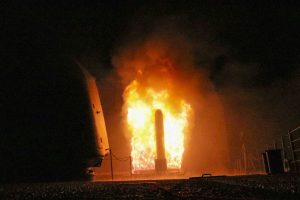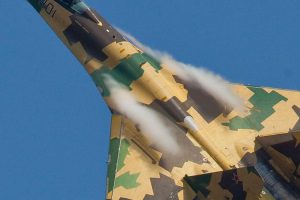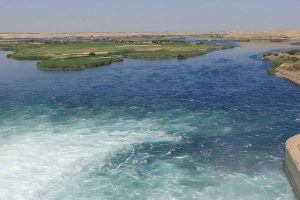The Organisation for the Prohibition of Chemical Weapons said on May 16 that it has concluded two women were exposed to sulfur mustard in an attack on a Kurdish village in Syria’s Aleppo province last September.
After the September 16 attack, ANHA reported that sources in the village of Um Hosh said one mortar landed near a home, causing two women to be hospitalized after nearly suffocating.
The OPCW fact-finding mission interviewed the two women but was unable to visit the site, Reuters reported. In a report published on its website Tuesday, the OPCW said it based its conclusions on the interviews, lab tests of blood samples, and information from the Russian military, which the Syrian government requested gather and transfer evidence from the site.
FLASH – #Daesh/#ISIS used toxic gases to shell Um-Hosh village in #Efrin, northern #Aleppo: https://t.co/kjWClpAvuL pic.twitter.com/gFeDbA7kKB
— Rojava Defense Units | YPG (@DefenseUnits) September 16, 2016
The OPCW fact finding team traveled to Syria twice – from December 11-19 and January 6-12 – to collect samples and gather facts.
The report noted that Russia’s teams were not able to visit the site until two months after the attack and were not able to visit the women’s home. A Syrian Arab Republic technical committee visited the site on December 3.
Both teams have reported that a mortar was recovered from the site, but the location “of any potential weapon that may have caused injuries to the two casualties has not been established.”
“However based on the interviews carried out, the documents reviewed, and the results of blood sample analyses, the FFM can confirm that the two female casualties reported to have been involved in the incident in Um-Housh, Aleppo of 16 September 2016 were exposed to sulfur mustard.”
Report of the OPCW Fact-Finding Mission in Syria regarding the incident of 16 September 2016
An OPCW examination of the 217-mm caliber mortar recovered from the site concluded that it contained sulfur mustard.
ANNA News filmed the Russian military investigation of the Um Hosh site.
Chemical attacks
The OPCW was not tasked with assigning blame for the attack, but Kurdish officials blamed the attack on Islamic State. ARA News reported on September 17 that five civilians and three SDF members were taken to Efrin hospital.
Update #afrin #ISIS attacked Kurdish Vlgs with Chemical weapon, exposed cases can't breath, N-Syria #TwitterKurds pic.twitter.com/mLsjYmxZHY
— Kovan Direj كوفان (@kovandire) September 17, 2016
“ISIS and other radical Islamist groups in Aleppo province are in possession of chemical weapons. They have used those weapons in several attacks on populated areas in Aleppo province, especially against the Kurds,” ARA News quoted Syrian Democratic Council member Rezan Heddo as saying.
SDF liberated Um Hosh from Islamic State on August 30, 2016.
Bellingcat noted that the munition used in the attack was similiar to one used a month before in the rebel-held town of Marea. That attack was also blamed on Islamic State.
A black liquid extracted from that mortar is similar to one found in yet another suspected Islamic State attack, also in Marea, in August 2015.
The Guardian reported at the time that the evidence suggested Islamic State had gained access to Syrian President Bashar Assad’s chemical stockpiles, which were supposed to be removed from the country under a 2014 international agreement.
Multiple chemical weapons attacks have been reported since the last of Assad’s stocks were reportedly removed from the country. On April 26, the OPCW said autopsies of civilians killed in an apparent attack on the town of Khan Sheikhun 19 days earlier revealed the presence of sarin or a sarin-like substance.






